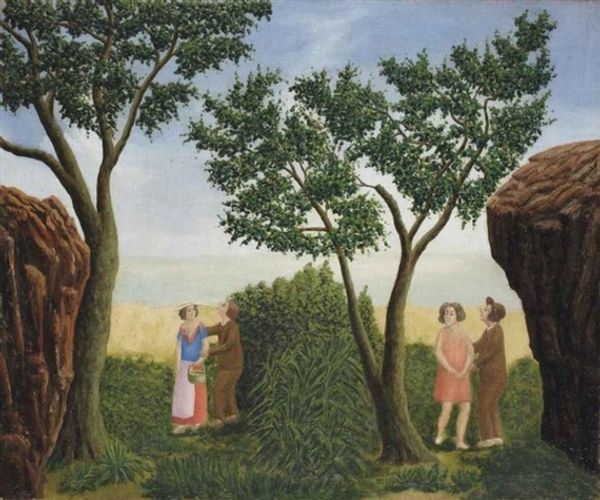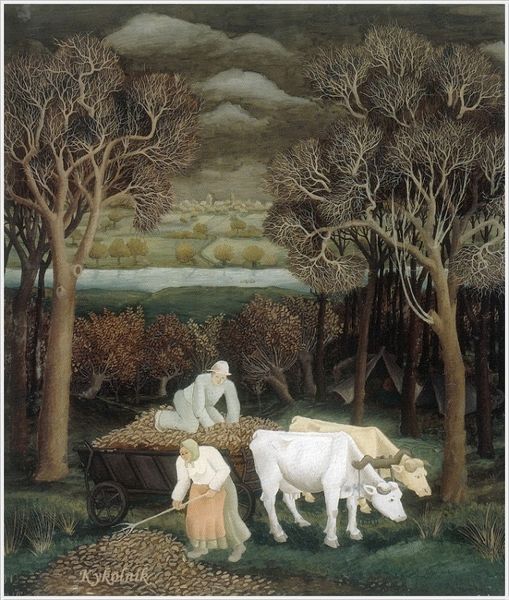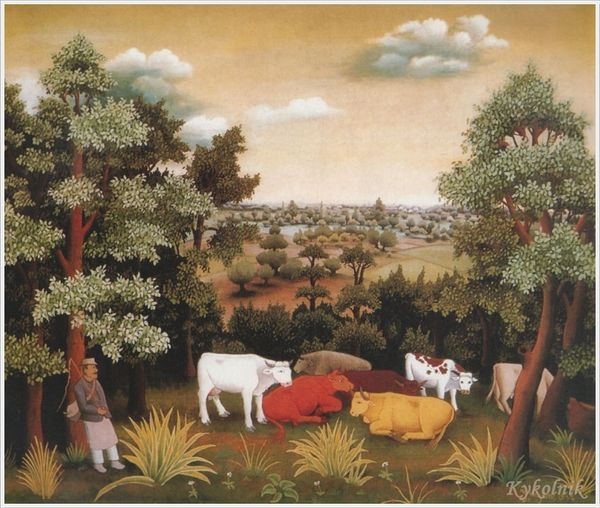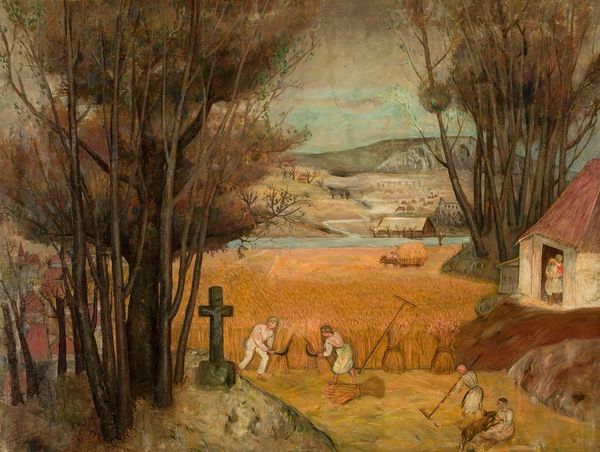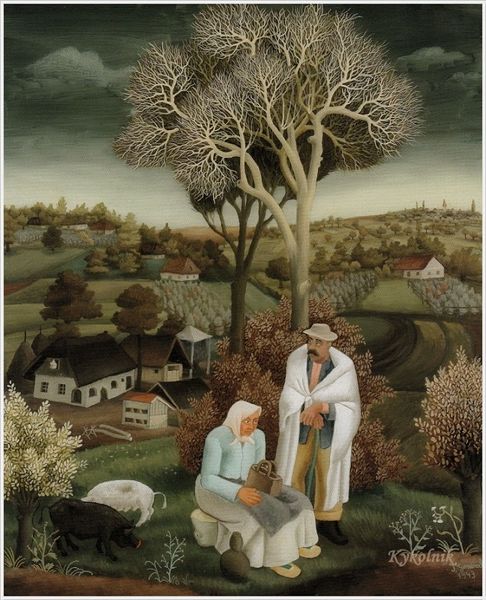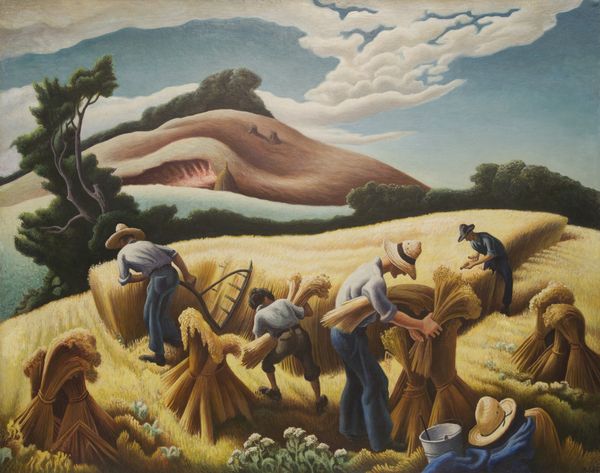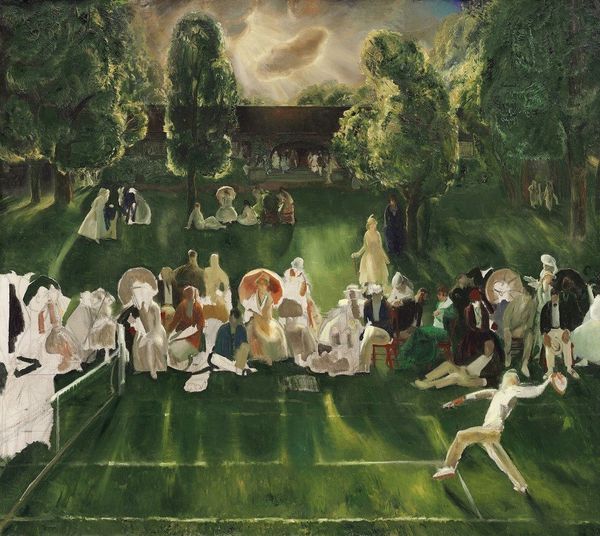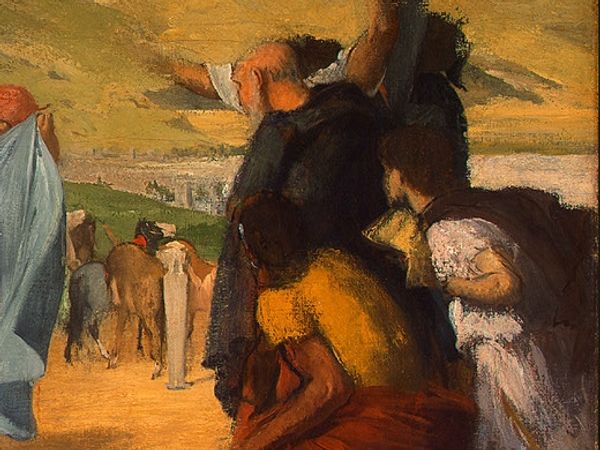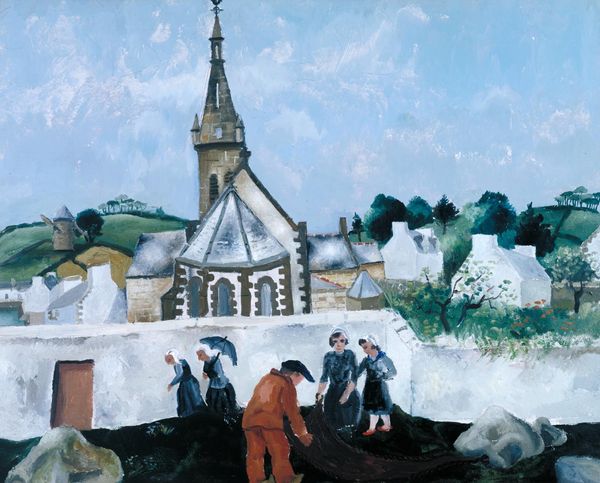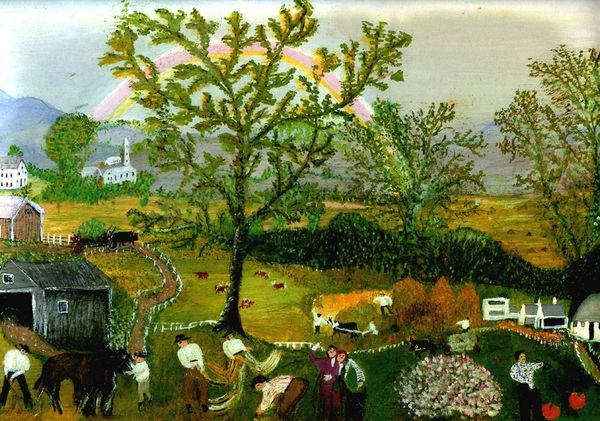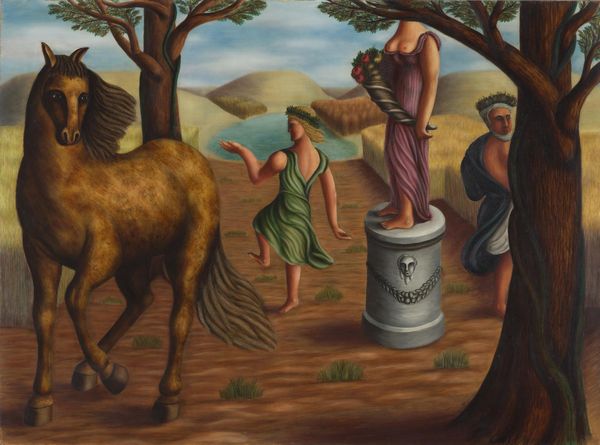
Dimensions: support: 1426 x 1428 x 24 mm frame: 1703 x 1705 x 130 mm
Copyright: © Estate of Stanley Spencer. All Rights Reserved 2014 / Bridgeman Art Library | CC-BY-NC-ND 4.0 DEED, Photo: Tate
Curator: Sir Stanley Spencer's "Zacharias and Elizabeth," currently housed at the Tate, offers a rather unusual take on a biblical scene, wouldn't you say? Editor: Absolutely! The first thing that strikes me is the slightly unsettling atmosphere – a mix of the mundane and the miraculous. Curator: Spencer often situated biblical narratives within his own local context, reflecting his deep connection to place and community. The stark, almost clinical rendering of the figures... Editor: ...is reminiscent of early Renaissance depictions, with a flattening of space and deliberate symbolism. Notice the cage, and the figures in white. Curator: Those recurring motifs within Spencer's oeuvre signify confinement and purity, often linked to spiritual or moral states. The female figures, too, seem to occupy ambiguous roles. Editor: It makes me think about how Spencer uses these familiar stories to explore themes of isolation and the search for meaning within ordinary life. Curator: Indeed, he's challenging conventional interpretations, grounding the divine in the everyday struggles of human experience. Editor: It's a fascinating and complex work—one that invites us to reconsider our relationship with faith and community.
Comments
tate 7 months ago
⋮
http://www.tate.org.uk/art/artworks/spencer-zacharias-and-elizabeth-t07486
Join the conversation
Join millions of artists and users on Artera today and experience the ultimate creative platform.
tate 7 months ago
⋮
In St Luke’s gospel, Zacharias is sacrificing in a temple when he is visited by the archangel Gabriel. Gabriel tells him that, although his wife Elizabeth is past childbearing age, she will bear a child from God. He will grow up to become John the Baptist. Spencer imagines the story in a garden behind his studio in Cookham. He wrote: ‘It was to be a painting characterizing and exactly expressing the life I was … living and seeing about me… to raise that life round me to what I felt was its true status, meaning and purpose.’ Gallery label, September 2004


